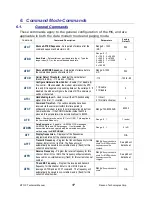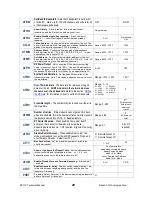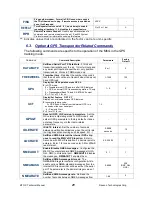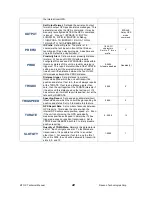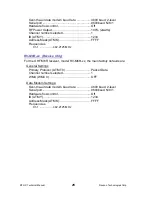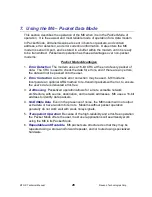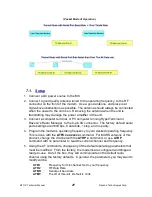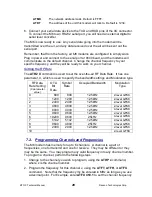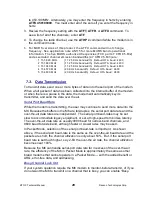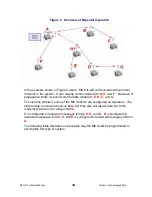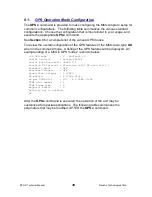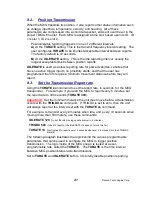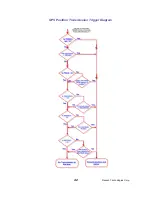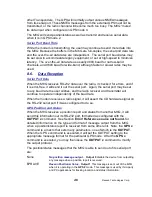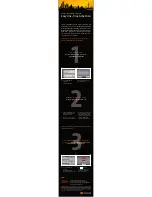
M7 GX Technical Manual
31
Raveon Technologies Corp.
When communicating over the air,
M6
modems transmit their Unit Address and the
Destination Address along with the data. Receiving modems check the received
Destination Address, and see if it matches their Unit Address. If it does match, the
receiving modem outputs the data it received via its serial port. If it does not
match, the receiving modem discards the data, and does not send it out the serial
port.
Setting A System-Wide Address
If individual addressing is not needed in your system, there are two ways to ensure
it is not used. One way is to set all modems in the system with the same Unit
Address and Destination Address. From the factory, these are both set to 1234,
and thus, all modems can communicate with all other modems, using the address
1234. The advantage of using this system-wide address, is that if there are other
M6 modems on the channel, but in some other system, they probably will not have
the same Unit Address, and thus will not interfere with your system. To reduce the
possibility of data cross-talk, the system implementer may wish to use a different
system-wide address for the Unit Address instead of 1234. There are over 65,000
addresses available.
The
ATLA
command can be used to set an additional address that the M6 will
listen for.
An alternate way to disable addressing altogether, is set the Address Mask to 0000
(
ATMK
0000 command). This tells the M6 to ignore the address, and receive
every transmission.
Broadcast Transmissions
The double FF is used to identify a broadcast packet. A transmission with a two
digit FF in the first two positions of the destination ID, or in the last two positions of
the destination ID, will be interpreted as a broadcast, and any modem with an ID
that matches the two non-FF digits will receive the data. For example, sending
data with a destination ID of 12FF will be received by any modem with a unit ID
1200 through 12FF. Sending data with a destination ID of FF34 will be received by
any modem with a unit ID of 0034 through FF34.
The Address Mask
The reason to use hexadecimal digits to represent the unit address, is that along
with the Unit Address programmed into the
M6
, there is an “Address Mask”
programmed into it. The default mask is FFFF. The address mask is used to
determine if a particular data transmission should be received by the modem.
Only in systems where some modems should only talk to certain other modems,
might you want to change the address mask. Whenever data is received over the
air, the Destination Address of the transmission is logically “ANDed” with the
Address Mask in the receiving modem. This is the
Effective Destination Address
.
The receiving
M6
also ANDs its own Unit Address with its Address Mask. The
result is the
Effective Unit Address
. The
Effective Unit Address
is compared to the
Effective Destination Address
, and if the two are identical, the data will be received.

